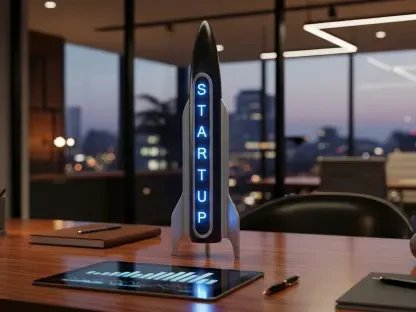In a world where artificial intelligence is reshaping industries at an unprecedented pace, South Korea stands as a critical hub for technological innovation, committing to deploy over 260,000 GPUs for AI projects. This staggering effort positions the nation as a global leader in this transformative field, and this roundup dives into Nvidia’s groundbreaking collaborations with South Korean tech giants like Samsung, Hyundai, SK Group, and Naver. By gathering insights, opinions, and analyses from various industry perspectives, the aim is to uncover the implications of these partnerships, compare differing views on their potential, and explore how they might shape the future of AI-driven advancements.
Exploring the Landscape of AI Innovation in South Korea
Nvidia’s strategic focus on South Korea, highlighted by a significant executive visit coinciding with a major international summit, underscores the country’s importance in the global tech arena. Industry observers note that South Korea’s robust ecosystem of tech companies and government support creates fertile ground for AI breakthroughs. The alignment between Nvidia and local leaders is seen as a catalyst for pushing boundaries in multiple sectors, from manufacturing to telecommunications.
Diverse opinions emerge on the scale of this initiative. Some technology analysts emphasize the ambitious nature of deploying such a vast number of GPUs, suggesting it could set a benchmark for other nations. Others, however, caution that the sheer volume of resources involved might strain infrastructure if not managed with precision. This mix of optimism and pragmatism frames the discussion on South Korea’s role as a potential AI powerhouse.
Deep Dive into Nvidia’s Key Collaborations
Samsung’s AI Mega-Factory and 6G Horizons
Samsung’s partnership with Nvidia to establish an AI mega-factory has sparked significant interest across tech circles. Industry insights highlight the integration of over 50,000 GPUs and the Omniverse platform as a game-changer for semiconductor and device production. Many experts view this as a bold step toward redefining manufacturing efficiency through real-time optimization and predictive analytics.
Contrasting perspectives arise regarding the joint push into 6G telecommunications via AI-RAN technology. While some industry watchers praise the innovation for its potential to enhance network performance and energy efficiency, others question the scalability of such advanced systems across global markets. Concerns about integration complexities in vast production networks are frequently mentioned, with a few analysts suggesting that smaller-scale pilot projects might be needed to validate the approach.
A recurring theme in discussions is the development of HBM4 memory tailored for future AI demands. Enthusiasts argue this could solidify Samsung’s position in the AI hardware race, though skeptics point out that rapid technological shifts might outpace these advancements if not paired with adaptable strategies. This diversity of thought underscores the high stakes of this collaboration.
Hyundai Motor’s AI-Powered Mobility Revolution
Hyundai Motor Group’s adoption of Nvidia’s Blackwell GPUs for autonomous vehicles and smart factories has generated a buzz in the mobility sector. Many industry commentators see the deployment of 50,000 GPUs for model training and the establishment of AI research centers as a transformative move. They argue that this could redefine transportation by accelerating the shift to intelligent, self-driving systems.
On the flip side, some analysts express reservations about the financial burden of such heavy investments. High costs and intense competition from global automotive tech players are often cited as potential roadblocks. A balanced view suggests that while the opportunities are immense, Hyundai must navigate these challenges with strategic partnerships and phased implementations to maintain momentum.
Perspectives on the broader impact vary as well. Certain thought leaders believe this initiative could inspire similar AI integrations in other mobility-focused companies worldwide. Yet, there’s a cautionary note from some quarters that over-reliance on cutting-edge tech without robust testing could lead to unforeseen setbacks. These differing opinions highlight the complexity of pioneering AI in such a dynamic industry.
SK Group’s Ambitious AI Cloud Vision
SK Group’s collaboration with Nvidia to build Asia’s first manufacturing AI cloud has drawn attention for its potential to revolutionize industrial operations. Many in the tech community commend the use of simulation and digital twin technologies, viewing this as a vital tool for enhancing efficiency across sectors. Access for government bodies, startups, and institutions is often cited as a democratizing factor that could spur widespread innovation.
However, not all feedback is uniformly positive. Some industry voices question whether smaller players can truly leverage such advanced cloud-based solutions, pointing to adoption barriers like cost and technical expertise. There’s a divide on whether this model is sustainable in a competitive landscape, with a few suggesting that tailored support for less-resourced entities might be necessary to ensure equitable benefits.
Another angle of discussion focuses on regional implications. Certain analysts argue that positioning South Korea as a hub for AI cloud services could attract global investment and talent. Others warn that regional dominance might be challenged by other Asian tech powerhouses if collaborative frameworks aren’t expanded. This spectrum of views paints a nuanced picture of SK Group’s bold vision.
Naver Cloud’s Physical AI Platform Breakthrough
Naver Cloud’s partnership with Nvidia to develop a “Physical AI” platform, bridging digital and physical realms, has intrigued many in the industrial tech space. Commentators often highlight its application in diverse fields like shipbuilding and biotech as evidence of AI’s expanding footprint. The comparison to software-defined vehicles is frequently made to illustrate how AI is becoming integral to real-world operations.
Differing opinions surface on the practicality of this ambitious concept. While some industry perspectives are optimistic, envisioning Physical AI as a new standard for global industries, others express skepticism about untested applications and integration hurdles. There’s a call for more case studies to demonstrate tangible outcomes before widespread adoption can be confidently predicted.
The potential to reshape industry norms is a hot topic. A segment of thought leaders believes this could inspire a wave of innovation in how physical environments are managed digitally. Conversely, cautionary takes stress the need for robust frameworks to address ethical and operational challenges that might arise. This blend of excitement and concern captures the experimental nature of Naver’s endeavor.
Strategic Takeaways from Nvidia’s South Korean Alliances
Synthesizing the varied insights, Nvidia’s partnerships reveal a shared emphasis on building AI infrastructure tailored to specific industries. Many in the tech sphere advocate for scalable GPU frameworks as a key lesson for other companies looking to emulate South Korea’s model. Cross-industry collaborations are often recommended as a way to amplify impact and share resources effectively.
Another widely discussed takeaway is the importance of adopting technologies like digital twins for operational advancements. Industry opinions frequently suggest that businesses should explore government-backed AI initiatives to access funding and expertise. This approach is seen as particularly relevant for smaller firms aiming to compete in an AI-driven market.
A final point of consensus is the need for adaptability in implementation. While enthusiasm for Nvidia’s moves is high, there’s a recurring note that companies must balance innovation with risk management. Tailoring AI solutions to local contexts and fostering continuous learning are often cited as essential strategies for long-term success in this rapidly evolving landscape.
Reflecting on the Impact and Next Steps
Looking back, Nvidia’s alliances with South Korean tech giants marked a pivotal moment in the journey of AI integration across industries. The diverse perspectives gathered in this roundup illuminated both the transformative potential and the inherent challenges of these collaborations. Each partnership, from Samsung’s mega-factory to Naver’s Physical AI, contributed unique insights into how technology could redefine global standards.
Moving forward, businesses and policymakers should prioritize building flexible AI ecosystems that can adapt to emerging trends like 6G and quantum computing. Exploring pilot projects to test scalability and investing in skill development for broader adoption emerged as critical actions. As South Korea continues to lead by example, the global tech community stands to gain from studying these efforts, potentially sparking a new wave of innovation in unexpected corners of the world.









